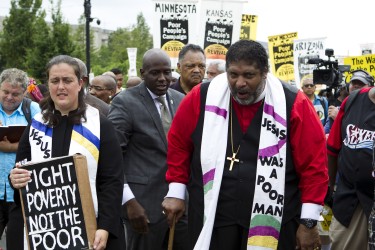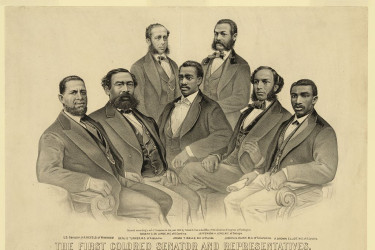In early and antebellum America, the violence of slavery, and the force necessary to escape it, were coded as masculine. Black men, Carter Jackson rightly notes, sought to prove their manhood in self-defense and self-emancipation just as white revolutionaries had done a generation before them (58-59). Force and freedom were not only gendered by historians but by contemporary political discourse and actors. Given this and the seemingly male-led nature of abolition, the reader is left wondering exactly how women’s contributions shaped or redefined the philosophy of force and the principles which underlaid it. The lack of a clear gender analysis make Black women’s roles appear additive rather than transformative—an appendage to male leadership, thought, and action.
Though Carter Jackson wishes to decenter William Lloyd Garrison, John Brown, and other white abolitionists in her work, she ends up inadvertently reinforcing an older tendency in scholarship to begin the abolition movement around 1830. To her credit, Carter Jackson counters the traditional foregrounding of Garrison’s Liberator by acknowledging Walker’s Appeal as a starting point for Black abolitionist thought. However, work by Richard Newman, Christopher Cameron, Sinha, and Paul Polgar has pushed back against this periodization, focusing more on the early rise of abolitionism and its radical, interracial nature (167n5). In Standard-Bearers of Equality, for instance, Polgar examines what he calls the first abolition movement in the urban mid-Atlantic around the turn of the nineteenth century. He aims to undermine the Garrisonian depiction of early abolitionism as too gradualist and therefore too conservative. Carter Jackson, however, implies early in her book that the “antislavery movement” started only a few decades before the Civil War, rather than during the colonial period and Revolution, where the origin is now regularly placed in the historiography (8). In doing so, she dismisses the early movement as insignificant, if not nonexistent, and gives the impression that Black Americans only grappled with American republicanism from the 1830s on when we know that they were counter-critiquing and recreating that tradition since the late eighteenth century.
In crafting a “road to the Civil War” narrative, Carter Jackson could do more to acknowledge the deeper origins of the abolition movement and to the dynamic, revolutionary discourse with which Black abolitionists were in conversation. While it makes sense to bookend a story about the abolitionist tactical shift from moral suasion to violence with the 1830s and the 1860s, that story leaves out antislavery and Black radical thought before Walker and Garrison and suggests that the political discourse of violence sprung up in their wake. Carter Jackson’s analysis would have benefited from a brief comparison of early and later abolitionism and how Black thought explored and superseded the Revolution’s ambivalent promise of freedom and equality.




















